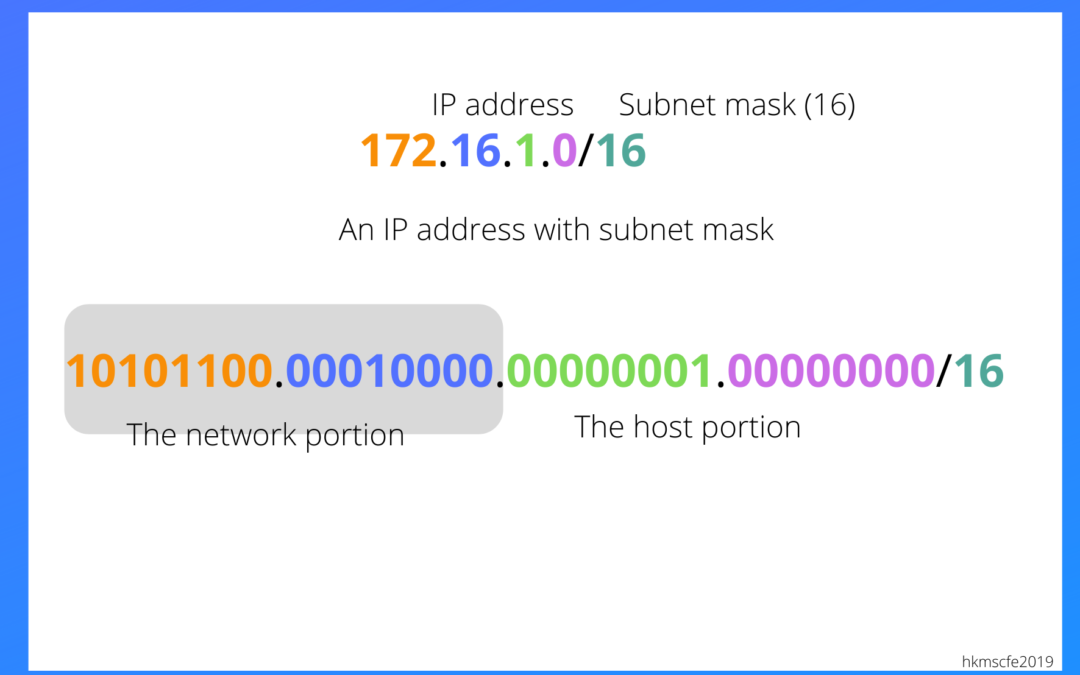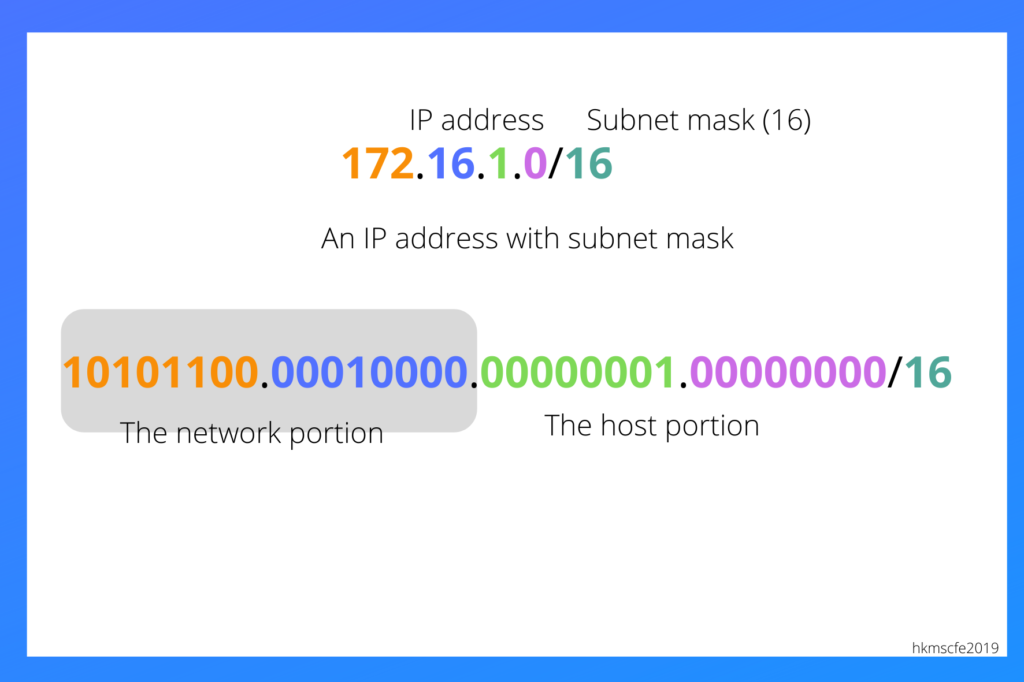This is a tutorial to help you with understanding and finally doing IP subnetting successfully. This is part 2. *For the sake of simplicity, explanations will focus on IPv4.
Anatomy of an IP address
IPv4 addresses is made of 32 bits divided into 4 octets (each octet s 8 bits).
An IP address can be divided into 2 portions: the network portion and the host portion. The network portion determines the bits within the IP address that belongs to the network (or subnetwork), while the host portion are the hosts within the subnet.
Network portion is identified by the subnet mask. In the example given, the subnet mask is given (/24) and 24 bits are the network portion.
The host portion is 8 bits – this means that the subnet can give and IP address and have up to ((2^8)-2) = 254 different devices within the subnet.
In this next example, 172.16.1.0/16, you see that the network portion is smaller (16 bits) while the host portion is bigger (16 bits). In this particular subnet, it can hold up to ((2^16)-2) = 65534 different devices.
So, the bigger the host portion, the more unique addresses it has and the more different devices it can have.
Given these IP addresses, can you identify the network portion and the host portion? Give it a try.
- 172.16.16.0/16
- 172.16.16.0/24
- 172.16.16.0/20
Answers are here.
Previous : Subnetting tutorial pt1
Next



















